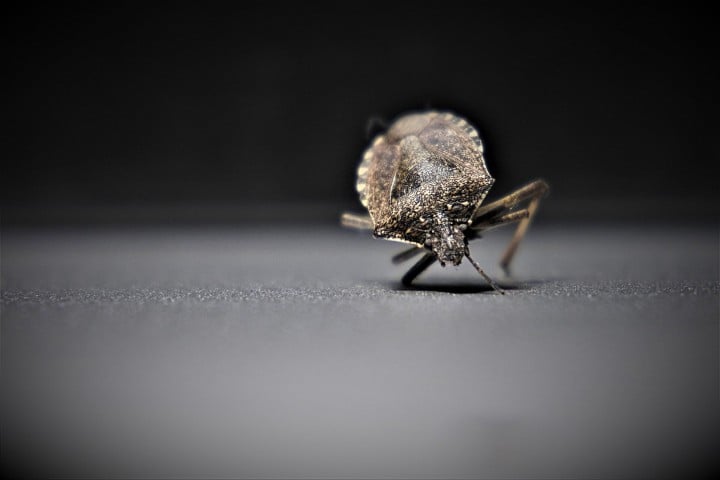You’re tired of those irritating bed bug bites and the constant worry they bring, right? Effective extermination starts with thorough cleaning and targeted treatments. Focus on infested areas to regain your home’s peace and prevent a severe infestation.
You need fast, proven methods: seal hiding spots, wash all linens in hot water, and treat furniture with safe products. Examine mattresses and cracks carefully to ensure these persistent pests have nowhere to hide. Consistency is essential for lasting results.
For comprehensive guidance, bedbugspecialist.co.uk recommends professional-grade treatments that target each stage of the bed bug life cycle. You’ll save time, stress, and money by combining do-it-yourself tactics with expert support, leaving your home permanently pest-free.

Recognizing Bed Bug Signs
You want to be sure you’re dealing with bed bugs before taking action. Recognizing these pests early can save you time, money, and completely stress.
Elusive Marks
You might catch small dark spots on your mattress or sheets. These are often fecal traces from feeding bed bugs, leaving tiny reminders that persist.
Unusual Itching
You may wake up scratching areas you didn’t notice before. Bed bug bites can appear in clusters, leaving red welts on exposed skin every morning.
Faint Blood Stains
When bugs get crushed in your sleep, you might see tiny smears of blood. These hints near bedding suggest active feeding during most nighttime periods.
Odd Musty Odor
Some people detect a sweet, musty smell when infestations are severe. This odor can linger on fabrics, actively making it another indicator of bed bugs.
Visible Shell Casings
As bed bugs grow, they leave behind exoskeletons. By spotting these transparent shells, you can confirm the presence of emerging insects nearby within your furniture.
Inspecting Common Hiding Spots
When you know bed bugs are around, you should completely systematically check their favorite hideouts. Inspect carefully, ensuring you leave no corner undiscovered or overlooked.
- Mattress Seams: Look beneath folds for tiny shells indicating bed bug presence.
- Baseboard Gaps: Inspect cracks along walls, checking openings where pests can thrive.
- Upholstered Furniture: Peek under cushions, probe seams for eggs or adult insects.
- Electronics: Check vents and crevices in clocks, bed bugs nest in places.
- Closets and Clothing: Check pockets where bed bugs may travel between fabrics.
Be thorough during inspections, particularly in tight spaces. Regular checks help you identify trouble spots very early, preventing a much more severe bed bug outbreak.
Containing the Bed Bug Infestation
Once you spot suspicious activity, act quickly to contain the outbreak. Preventing bed bugs from spreading can save you considerable frustration and great expense later.
- Isolate Bedding: Place sheets, pillows in sealed bags to reduce escaping pests.
- Vacuum Thoroughly: Focus on cracks, corners, upholstery, discard contents in an outdoor bin.
- Launder Linens: Wash fabrics on high heat to kill insects in materials.
- Seal Cracks: Apply caulk on walls, baseboards, bugs can’t spread through gaps.
- Monitor Nearby Rooms: Check spaces to ensure bed bugs haven’t migrated beyond the area.
Preventing further movement is critical once bed bugs appear. Keep belongings completely isolated, block entry points, keep everything clean until the infestation is fully resolved.
Preparing Your Home for Treatment
Getting your space ready is vital for a successful bed bug elimination process. Proper preparation vastly increases the effectiveness of both DIY and professional methods.
Declutter Rooms
Remove unnecessary items from floors and furniture. The fewer objects lying around, the less opportunity bed bugs have to effectively hide or completely escape detection.
Wash Textiles
Gather clothing, curtains, and linens for a thorough cleaning. Hot water and high-heat drying can quietly destroy bed bugs, always lurking in deep fabric folds.
Protect Infested Areas
Cover your mattress with an approved encasement to trap bugs inside. This reduces migration, forcing them to remain where treatments can work effectively, in place.
Vacuum Everything
Thorough vacuuming eliminates loose offenders before treatment. Pay special attention to rugs, carpets, and any corners holding troublesome pests. Discard vacuum contents immediately and completely afterward.
Alert Household Members
Inform everyone about the plan. When all residents cooperate by cleaning, storing items, and limiting movement, the upcoming treatment stands a greater chance of success.
Effective DIY Bed Bug Solutions
You might try certain do-it-yourself tactics when budgets are tight. Some solutions are reliable, but always confirm your progress through ongoing checks to prevent reinfestation.
Steam Treatments
High-temperature steam can kill bed bugs on contact. Focus on furniture, mattresses, and baseboards, moving extremely slowly wherever complete heat penetration and efficiency is needed.
Natural Powders
Some people use diatomaceous earth or silica gel. These fine powders dehydrate bed bugs by damaging their exoskeletons, but very proper placement is truly crucial.
Traps and Interceptors
Bed bug interceptors under furniture legs help monitor movement. Sticky traps placed strategically can also catch wandering insects before they find new unwanted hiding places.
Enclosure Methods
Sealing infested items in plastic for several months can starve and suffocate the heavily entrenched bed bugs. Label containers carefully, and avoid prematurely reopening them.
Explore Expert Advice
Check the EPA’s DIY methods for additional guidance. Always verify you’re using safe and appropriate tools to properly protect people, pets, and the environment.
Professional Extermination Treatment Options
Sometimes, do-it-yourself efforts won’t cut it. Hiring trained experts ensures that all hidden bugs, eggs, and potential re-infestation zones are addressed entirely thoroughly and systematically.
- Comprehensive Inspection: Professionals examine cracks, furniture, and cluttered areas to pinpoint colonies.
- Targeted Pesticides: Experts select and apply treatments where bugs hide, minimize exposure risks.
- Heat Treatments: Technicians raise temperatures so bed bugs and eggs can’t survive.
- Follow-Up Visits: Sessions confirm success, re-treating any remaining insects that escaped measures.
Working with professionals can sometimes be costlier, but their expertise typically spares you from repeated treatments, unresolved infestations, and severe ongoing disruptions in your home.
Preventing Future Bed Bug Problems
After eliminating an infestation, it’s essential to avoid reintroductions. By adopting consistent habits, you can keep bed bugs from quickly reestablishing themselves in your environment.
Careful Housekeeping
Maintain cleanliness to reduce various hiding spots. Vacuum floors and furniture regularly, discarding contents outside. Dust and mop more frequently to deny bed bugs opportunities.
Inspect Second Hand Items
Before bringing used furniture or clothing home, inspect them closely for signs of bugs. A quick review can save you indeed very costly trouble later.
Protect Your Bed
Use bed bugs–proof encasements on mattresses and box springs. Keep blankets meticulously off the floor and secure clutter around your sleeping area to prevent problems.
Travel Cautions
When returning from trips, inspect luggage and wash clothes immediately. Bed bugs commonly hitch rides in suitcases, quickly invading your home almost unnoticed if unchecked.
Proactive Barriers
Seal wall cracks, fix peeling wallpaper, and discontinue cardboard storage. Stock plastic bins with tight lids to effectively thwart bed bug intrusion or continuous re infestations.
Ongoing Monitoring and Maintenance
Even after successful eradication, you need constant vigilance. With continuous checks, you’ll catch potential problems very early and avoid a painful repeat bed bug situation.
- Routine Inspection: Schedule checks around bedding, furniture, cracks to confirm no resurgence.
- Use Traps: Place monitors or interceptors under bed posts to detect insects.
- Keep Records: Document sightings or stains so you know when they appear.
- Watch Pets: Check bedding, keep animals groomed; bed bugs target warm-blooded hosts.
- Professional Tune-Ups: Consider inspections to catch issues and maintain a bug-free environment.
Stay on top of maintenance to keep bed bugs away for good. Diligent housekeeping, routine checks, and immediate action are truly your best defensive measures.
Last Key Steps
You can reclaim restful nights by quickly addressing infestations, thoroughly cleaning, and wash at 60 degrees to destroy any bed bug eggs. Remain vigilant, and you will keep bed bugs from undermining your peace again with confidence over time.
We hope you found this blog post on Simple Methods for Effective Bed Bug Extermination, useful. Be sure to check out Hire a Disinfection Service Before Moving Into a New House for more great tips!
Have Experience in the Moving Industry? Want an Additional Income Stream? Work With All Around Moving!
Are interested in applying your skills in the moving industry? Check out our program to earn extra income. Join our team, we can help you make money. Click here to learn more.





